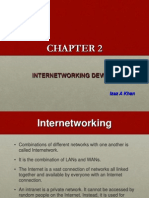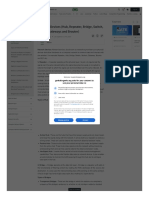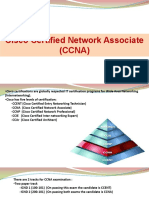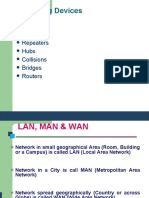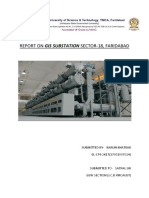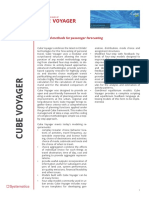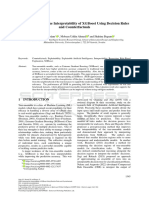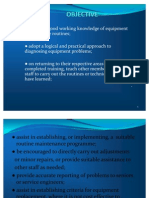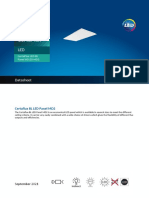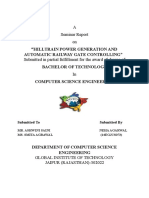0% found this document useful (0 votes)
11 views22 pagesCN Lecture 01 Networking Basics-TCP IP Model
The document outlines a course on Computer Networks, covering the TCP/IP protocol suite, connecting devices such as repeaters, hubs, bridges, switches, and routers, as well as collision and broadcast domains. It details the functions of each layer of the TCP/IP model and the characteristics of various networking devices. Additionally, it includes information on Ethernet and WLAN standards, along with references and recommended books for further reading.
Uploaded by
rahat00564Copyright
© © All Rights Reserved
We take content rights seriously. If you suspect this is your content, claim it here.
Available Formats
Download as PPTX, PDF, TXT or read online on Scribd
0% found this document useful (0 votes)
11 views22 pagesCN Lecture 01 Networking Basics-TCP IP Model
The document outlines a course on Computer Networks, covering the TCP/IP protocol suite, connecting devices such as repeaters, hubs, bridges, switches, and routers, as well as collision and broadcast domains. It details the functions of each layer of the TCP/IP model and the characteristics of various networking devices. Additionally, it includes information on Ethernet and WLAN standards, along with references and recommended books for further reading.
Uploaded by
rahat00564Copyright
© © All Rights Reserved
We take content rights seriously. If you suspect this is your content, claim it here.
Available Formats
Download as PPTX, PDF, TXT or read online on Scribd
/ 22







